There’s an argument that the 2021 MotoGP season has already featured two of the least predictable championship leaders of the modern era, with both Johann Zarco and then Pecco Bagnaia taking their turns to lead the points table.
Zarco, returning from veritable exile last year with Esponsorama Ducati after his KTM misadventure and rewarded with a Pramac Ducati seat for 2021, was the early leader thanks to impressive podiums in both the Qatar races that opened the year.
And now it’s Bagnaia who enjoys the lead. It’s fair to say that he too isn’t the Ducati rider that people expected to see at the front given the question marks over whether he was ready for the second works seat.
But while it was team-mate Jack Miller who took the victory last time out at Jerez, Bagnaia’s sheer consistency has been more valuable.
Zarco and Bagnaia take the list of riders who’ve held the championship lead in the MotoGP era – a period in which big beasts like Valentino Rossi and Marc Marquez have often monopolised the top spot for whole years at a time – up to 15.
Some of the shock points leaders of the past were mere flashes in the pan who slumped after their moment of glory. Others who seemed surprising at the time went on to achieve remarkable things.
But they’ve all got the right to brag about the time they were (sometimes briefly) the best in the world.
Category 1 – Still a shock
Loris Capirossi 2006
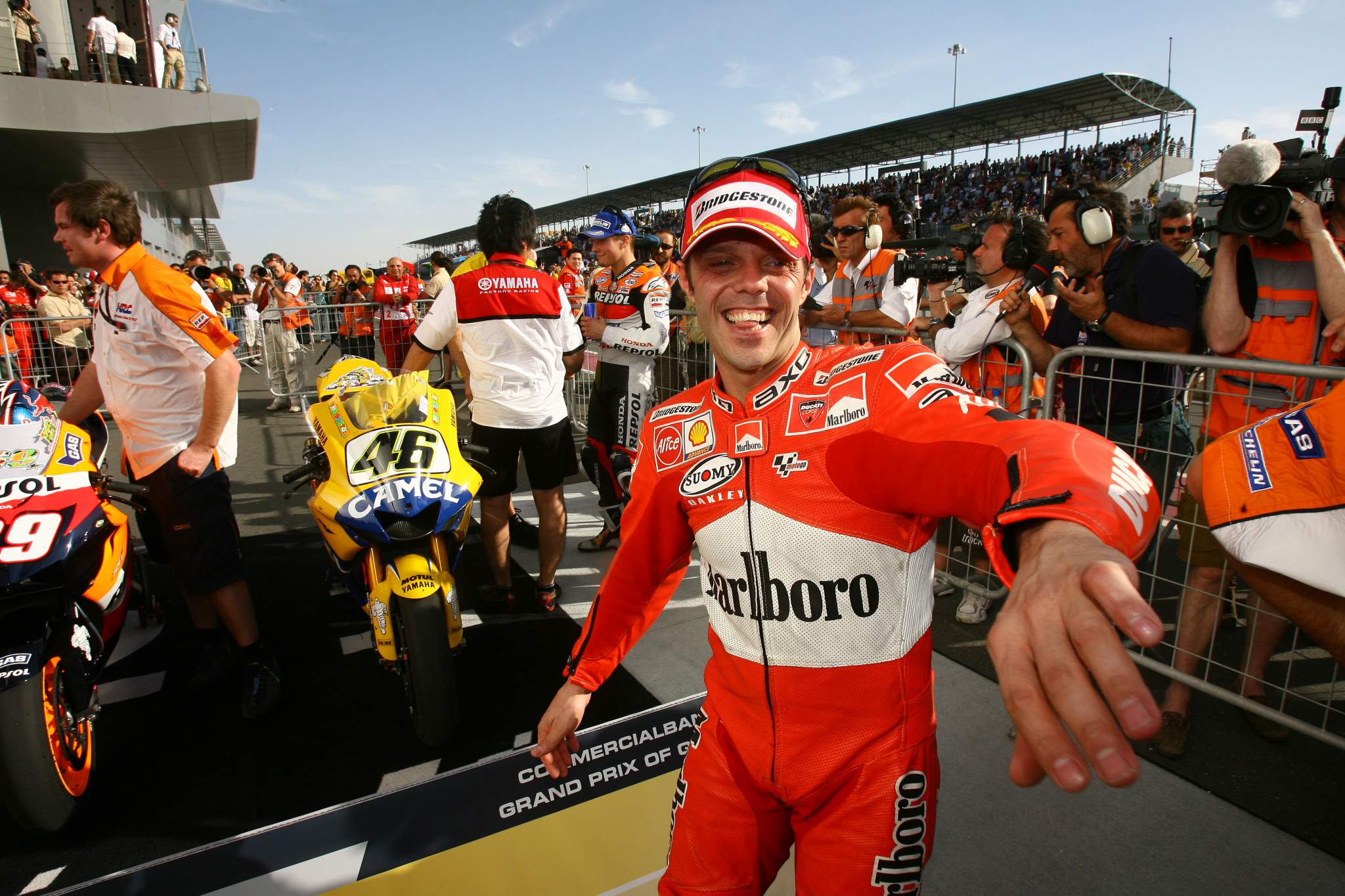
Ducati made its MotoGP debut in 2003, one year after the switch from two-stroke 500cc machines to four-stroke 990cc bikes, and got off to an impressive start with Loris Capirossi taking his first win only six races into the Desmosedici’s life at the Catalan Grand Prix.
But while he was capable of podium success on a semi-regular basis, when things weren’t going well they were often going quite badly.
Ten times a podium finisher (and a three-time winner) across 2003-05, his fourth place in the championship in Ducati’s first year looked like it might be a premature peak as the Japanese manufacturers reasserted their dominance following the polar shift to the four-strokes. Ducati fell back.
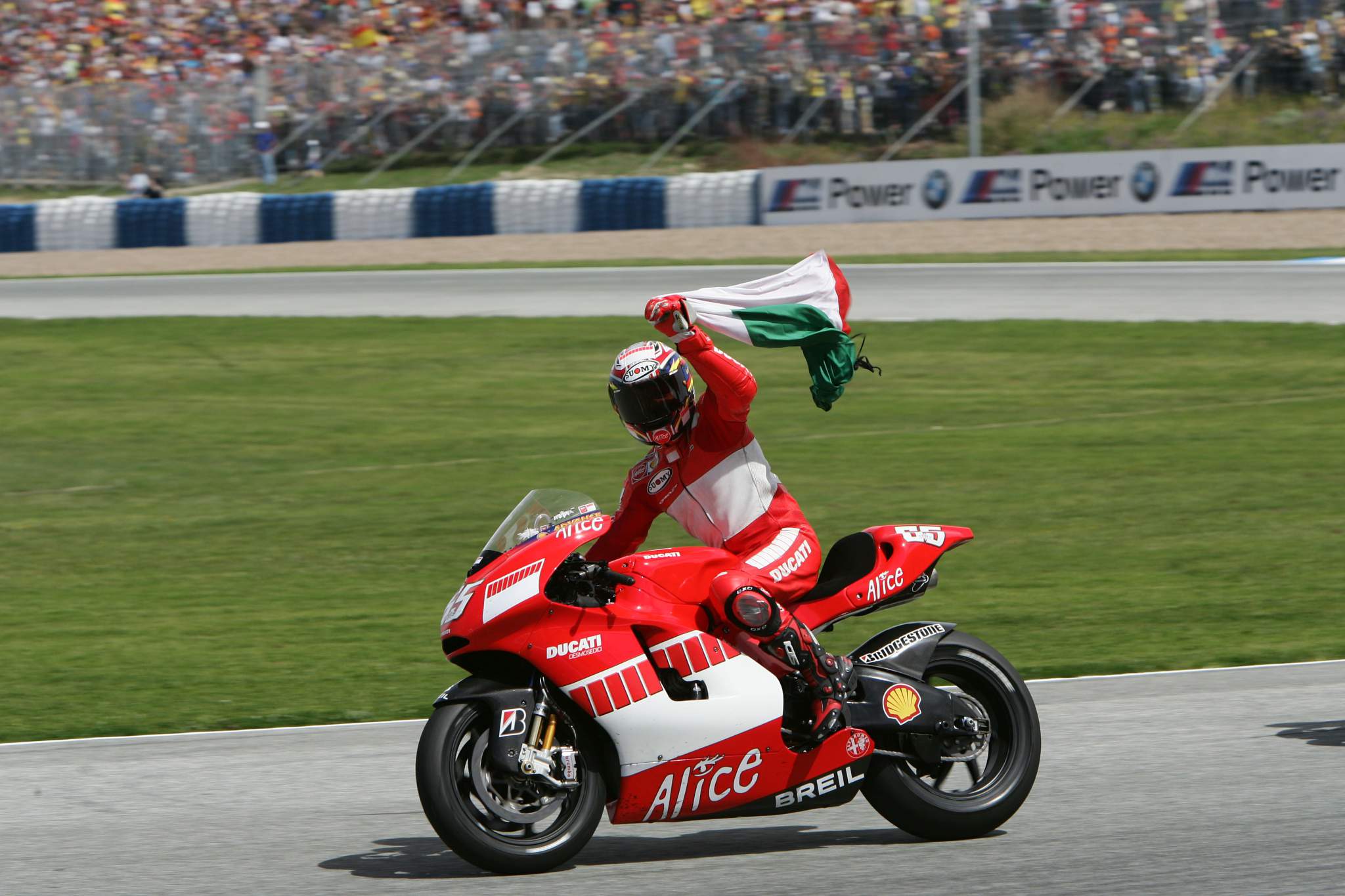
That’s why it was something of a novelty of timing and circumstance that led to three-time world champion (across 125cc and 250cc) Capirossi making two appearances in the points lead in early 2006.
A win in the Jerez opener and then a podium at Losail put him on top early on, and he had another one-race spell in front after second place at Mugello – his consistent run coinciding with Rossi’s nightmare start to the year and a lot of jockeying for position among the pretenders.
Capirossi’s reign at the top was shortlived, but it hinted at where the Ducati was heading… and set the scene for two more shocks that crop up later in our list.
Cal Crutchlow 2018
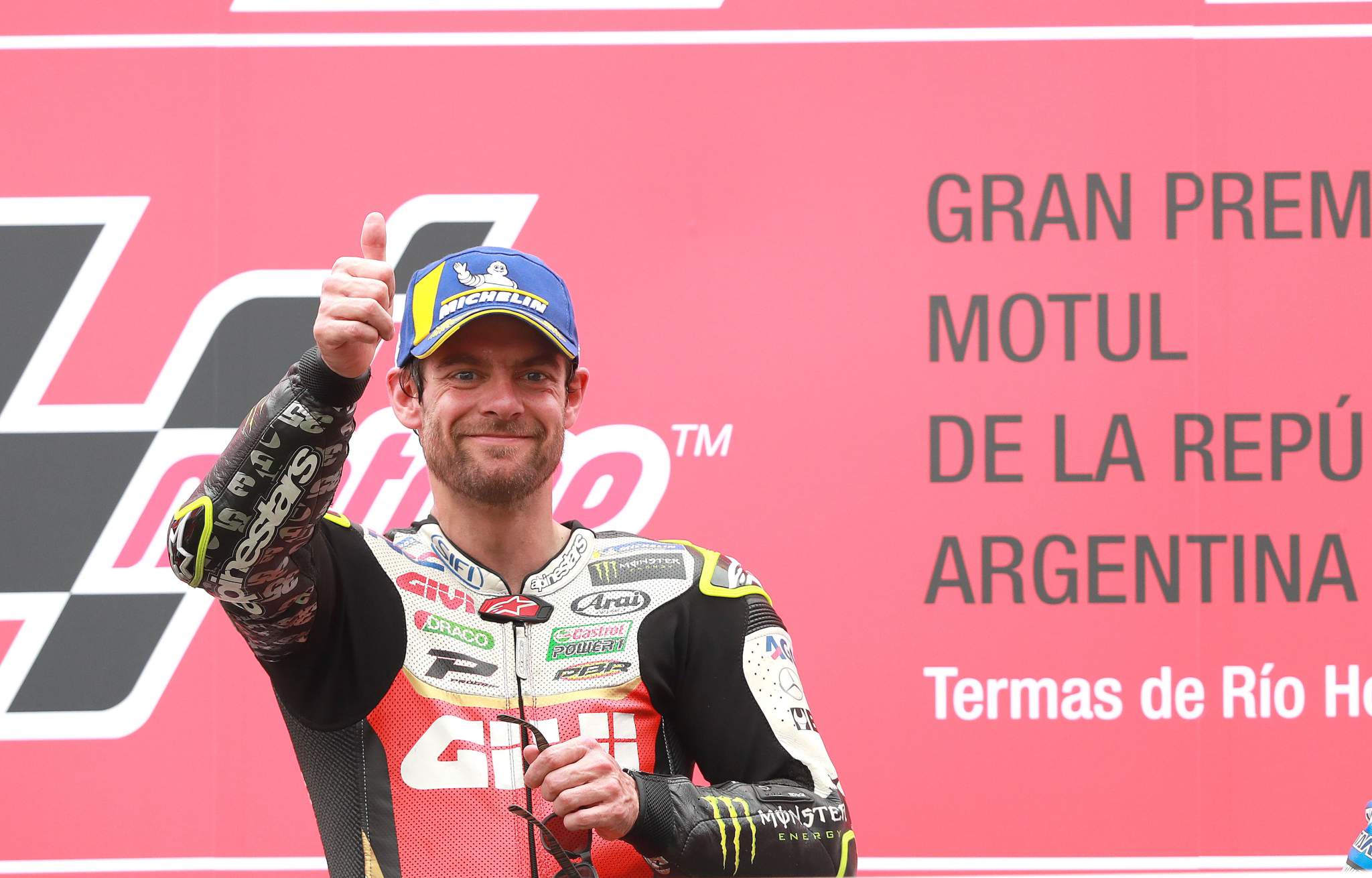
There’s no doubting Cal Crutchlow’s MotoGP quality. Twice a race winner in 2016, when he became the first British rider to stand on the top step of a premier class podium in 35 years with excellent victories at Brno and Phillip Island, he’d already enjoyed more than his fair share of success ahead of the start of the 2018 championship.
Always a rider who enjoyed kicking off the year at Qatar’s Losail circuit, that particular season didn’t disappoint either as he came home in fourth and earned a trip to the winners’ enclosure as best independent team rider.
However, it was next the time out in Argentina where he was able to do what often Crutchlow did best during his MotoGP career: make the most of a chaotic situation to come away with something rather special.
From even before the lights went out, it was clear that it wasn’t going to be a normal race, as Jack Miller lined up solo at the front of the grid on slick tyres and the rest of the pack tried to opt for a pitlane start in changing weather. The race was eventually suspended and started again, but Miller still cleared off with a huge lead from the grid.
From there, chaos reigned supreme. Jorge Lorenzo crashed out, Marquez had a huge incident with Rossi, Miller faded back through the field – and all the while, Crutchlow kept his head down and hunted down Tech3 Yamaha rider Zarco.
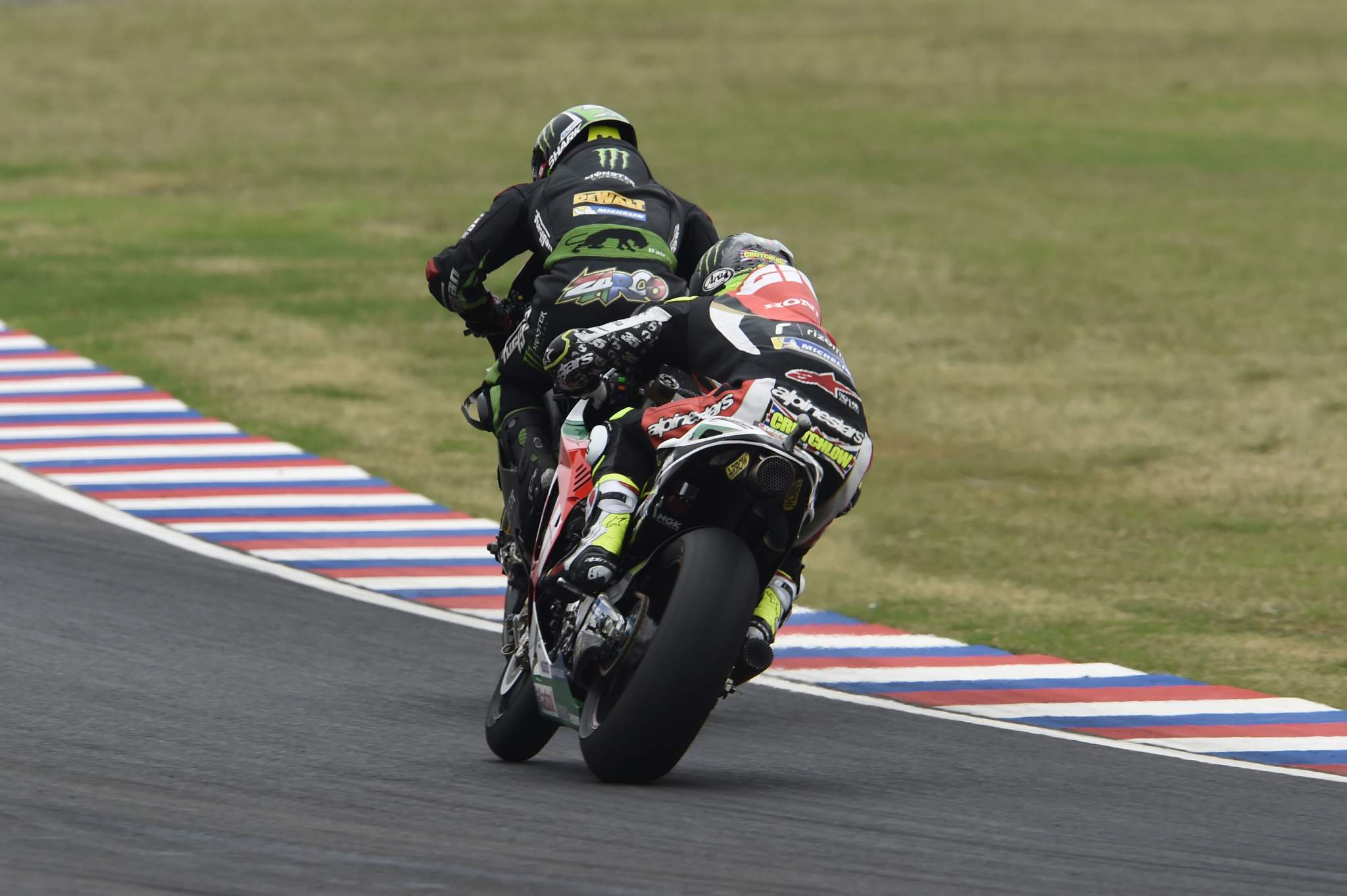
Nabbing him with three laps to go, Crutchlow took victory by a quarter of a second and headed to the next round in Texas three points clear of Andrea Dovizioso as a very unexpected championship leader.
That was as good as it got – crashes at the next two races meant Crutchlow soon lost touch in the championship and his season ended early with serious leg injuries from a crash at Phillip Island.
Category 2 – Shocks who became champions
Nicky Hayden 2006
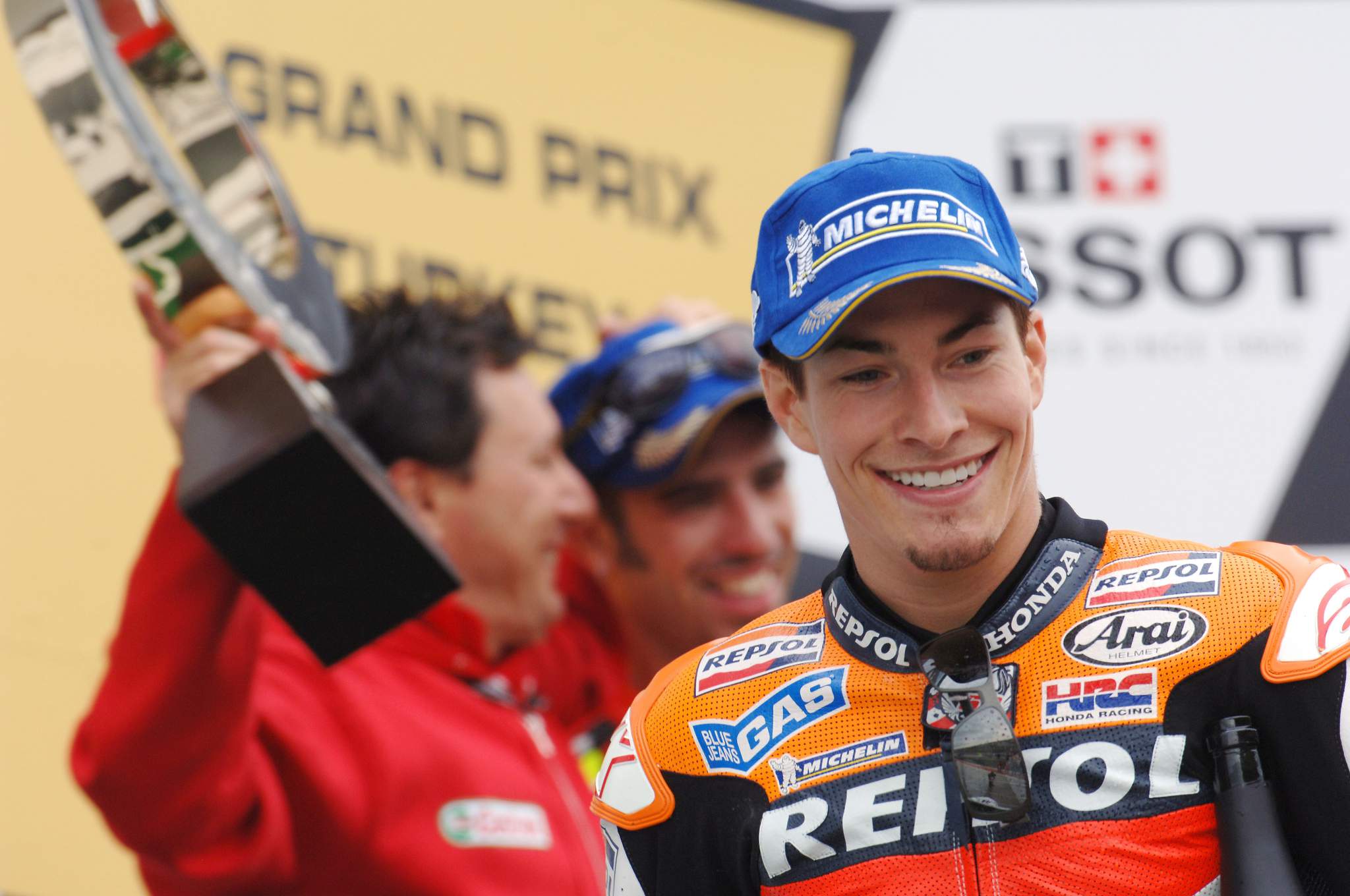
When Capirossi was deposed at the top in 2006, it wasn’t by a fellow race winner but rather was by a guy who would barely see the top step of the podium that year.
Yet even more remarkably, that guy would (with the exception of two weekends) maintain the lead right until the end of the year and be crowned 2006 world champion.
Nicky Hayden’s remarkable success came not as the result of a runaway title charge, but rather through sheer consistency, as the underdog American put together an almost perfect season to challenge and beat Rossi.
He was on the podium 10 times from 17 races and failed to finish only once, at the penultimate round in Portugal when Honda team-mate Dani Pedrosa looked to have ended Hayden’s title hopes by wiping him out.
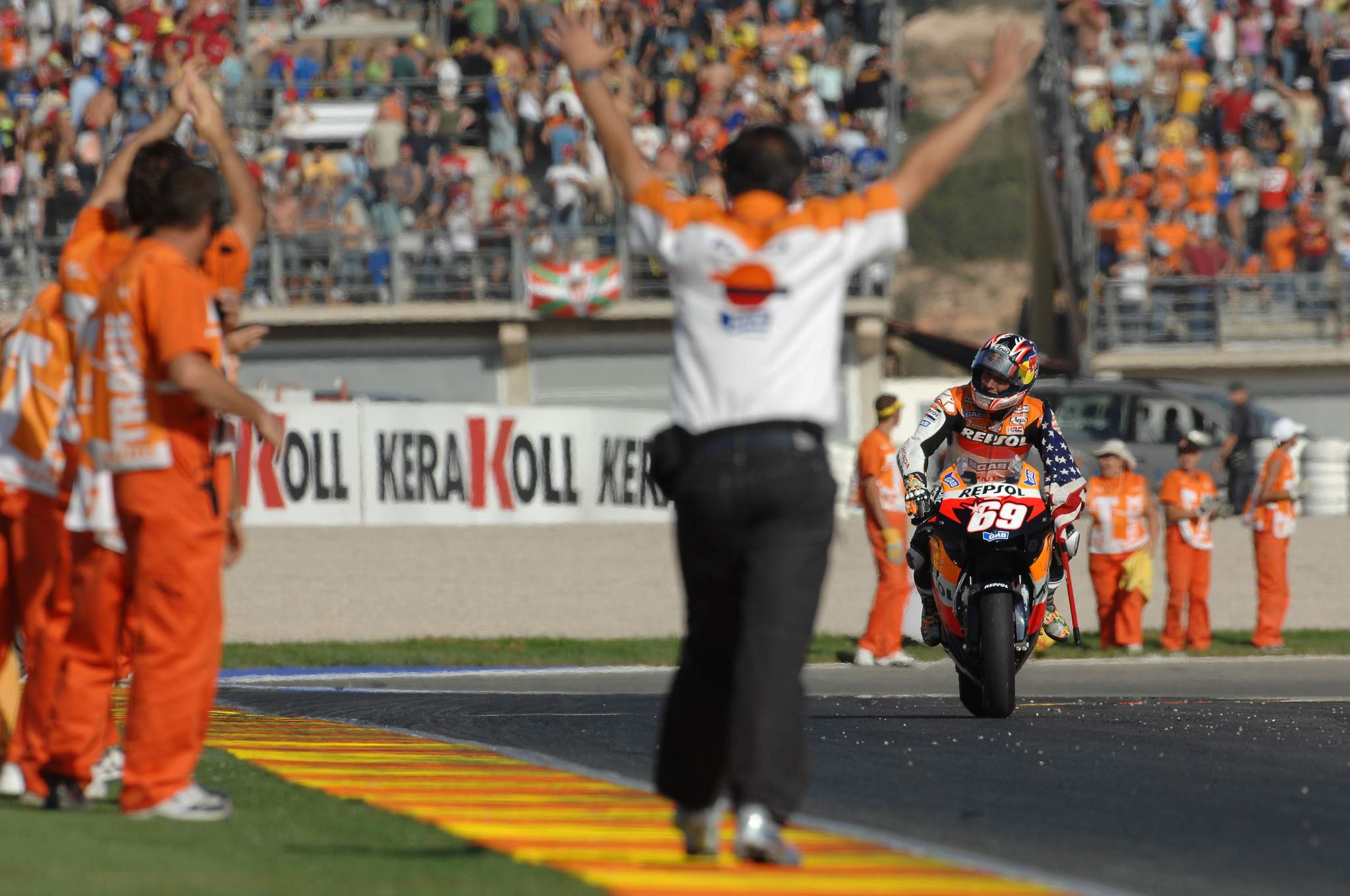
That was only the second time all year Hayden had been shuffled out of the championship lead, but this one seemed most costly as it was Rossi who usurped him with just one round to go.
But Pedrosa was spared many a blush in the final reckoning, when it was a mistake from Rossi at the Valencia season finale that eventually decided the title and made Hayden not just the most unlikely championship leader but the most unexpected victor of the modern era.
Casey Stoner 2007
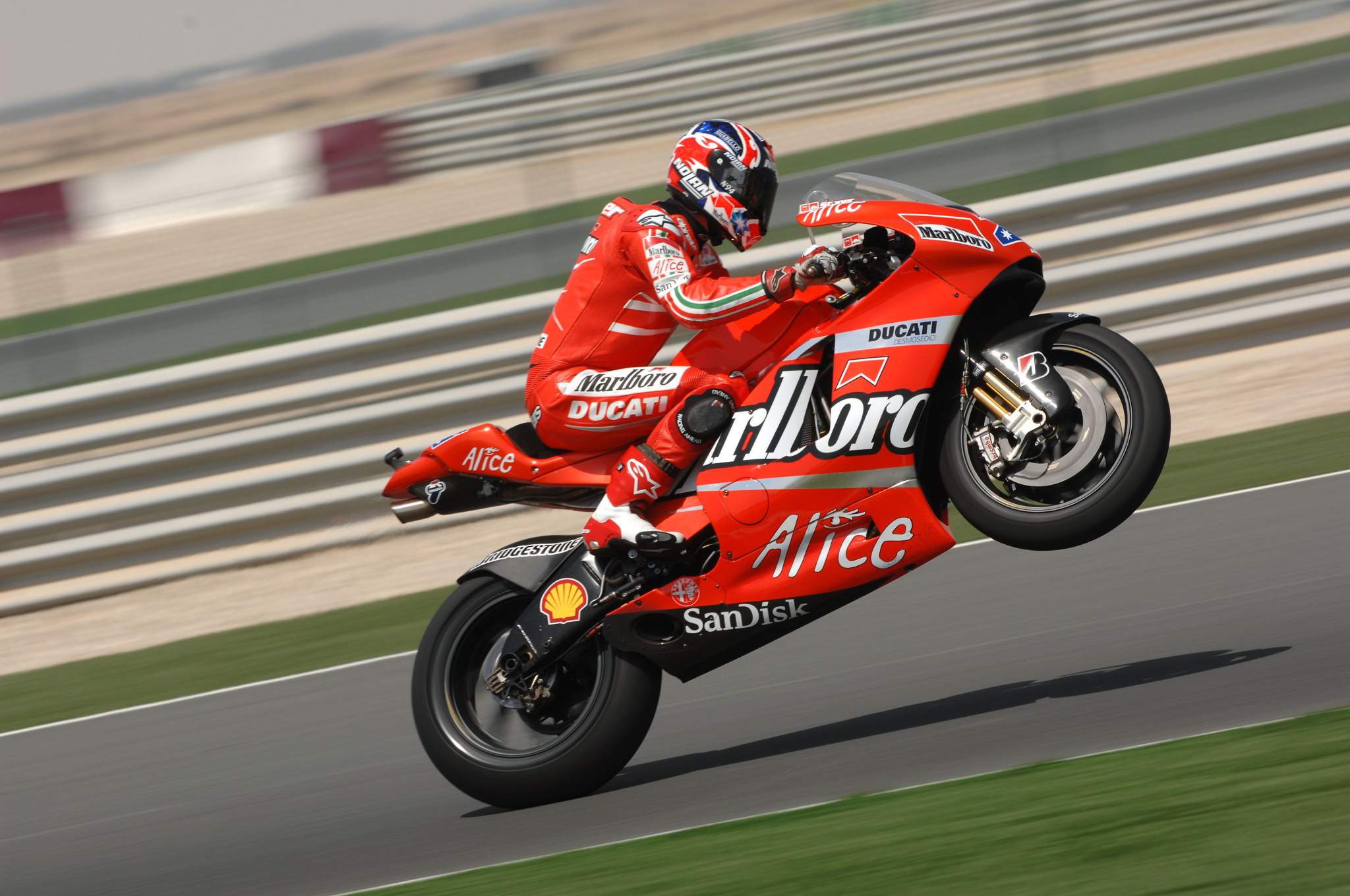
When Ducati hired young Australian Casey Stoner to join Capirossi for the 2007 season, he was far from its first choice.
Rumour has it, he was well down the list of riders phoned up to take the seat, with injuries, rejections and better financial offers from elsewhere conspiring to keep people like Sete Gibernau and Troy Bayliss from jumping onto the bike.
Yet it didn’t take long to make what arguably was a decision forced upon Ducati – something that the current Bagnaia situation has shades of after Dovizioso’s surprise departure – look like an inspired move.
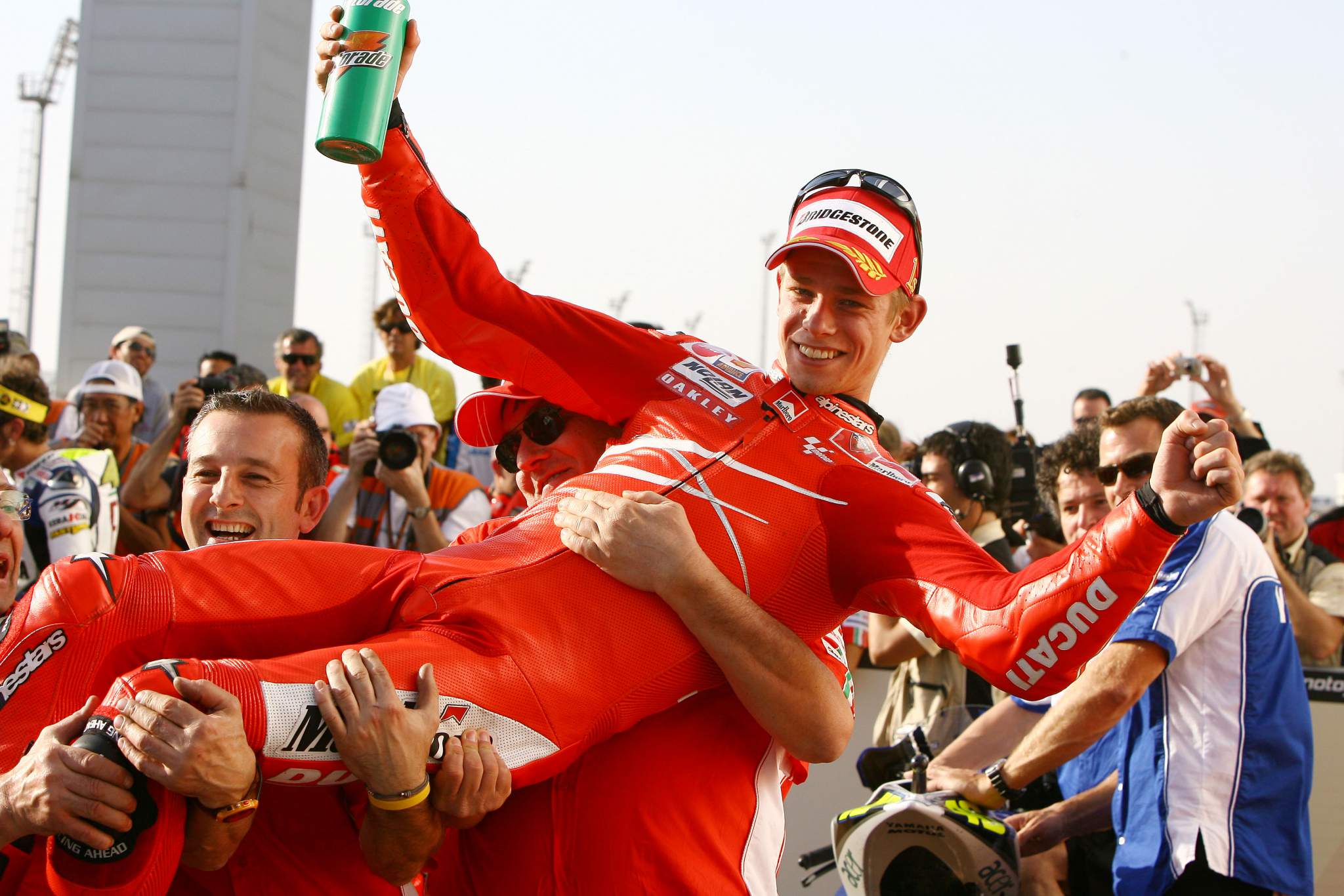
In only his second year of MotoGP and first as a works rider, Stoner won three of the first four races. There’s a story of how his small salary-large win bonus contract was very quickly subject to a renegotiation attempt – a move that failed and left the then-22-year-old a very wealthy young man!
He went on to dominate the season, winning 10 of the 18 races and ending the year a colossal 125 points ahead of Pedrosa to secure his place as one of the modern greats of the sport.
Marc Marquez 2013
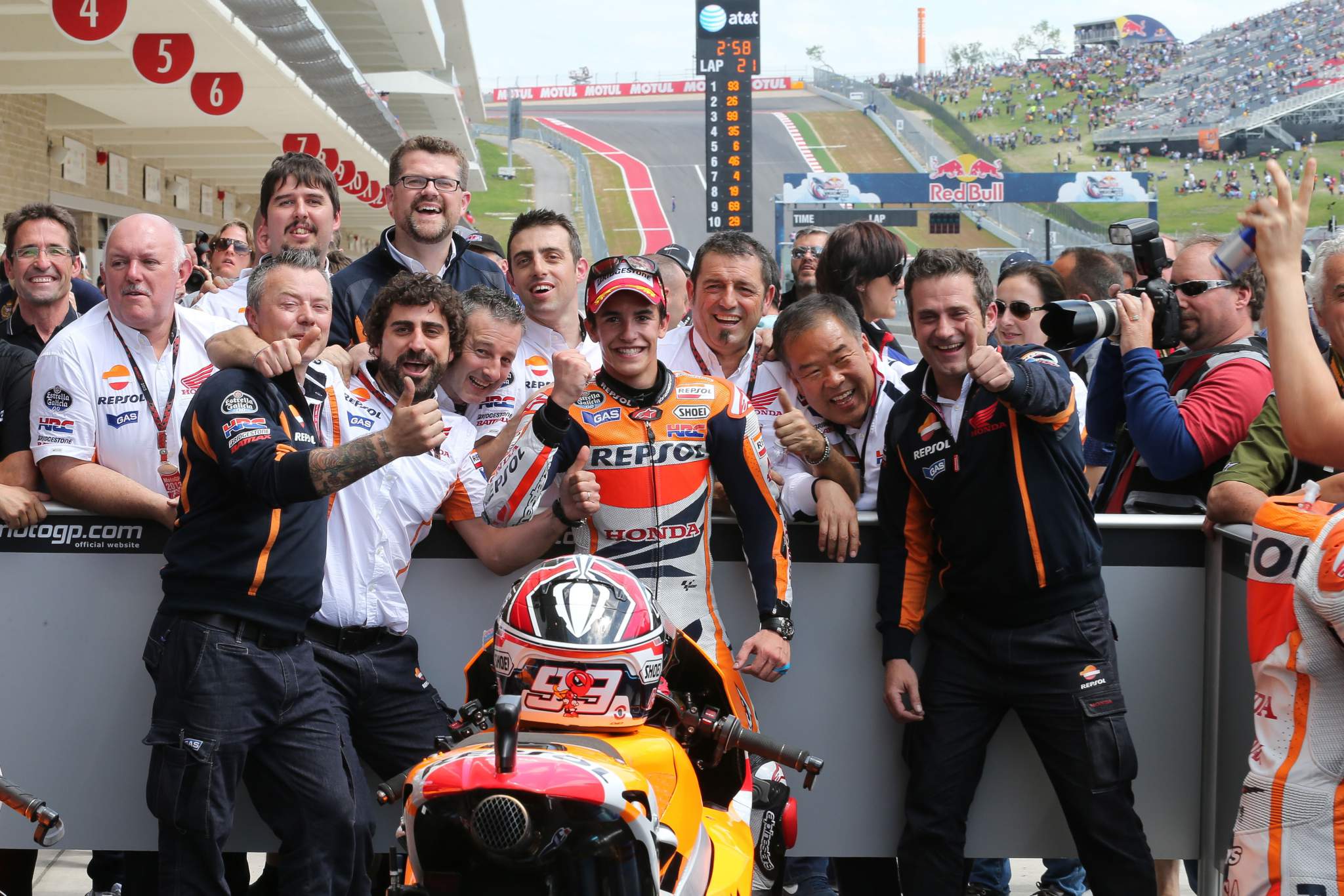
Sometimes, before a rider arrives in MotoGP, you already know that they’re going to be big. Jorge Martin was an example in 2021, taking a pole position and podium in only his second race, while everyone is keeping a very close eye on 16-year-old Moto3 talent Pedro Acosta right now.
But before Martin and Acosta, there was Marc Marquez.
Already blisteringly fast, super aggressive, and experienced beyond his age in Moto2, he was only denied a rookie title in the intermediate class by a huge crash towards the end of his season – which means perhaps the world should have been less surprised about what happened when he graduated to MotoGP.
A podium finisher in his first ever race for Honda at the Qatar Grand Prix, it took him exactly two races to win, with victory at Austin leaving him level on points with Lorenzo and ahead of countback.
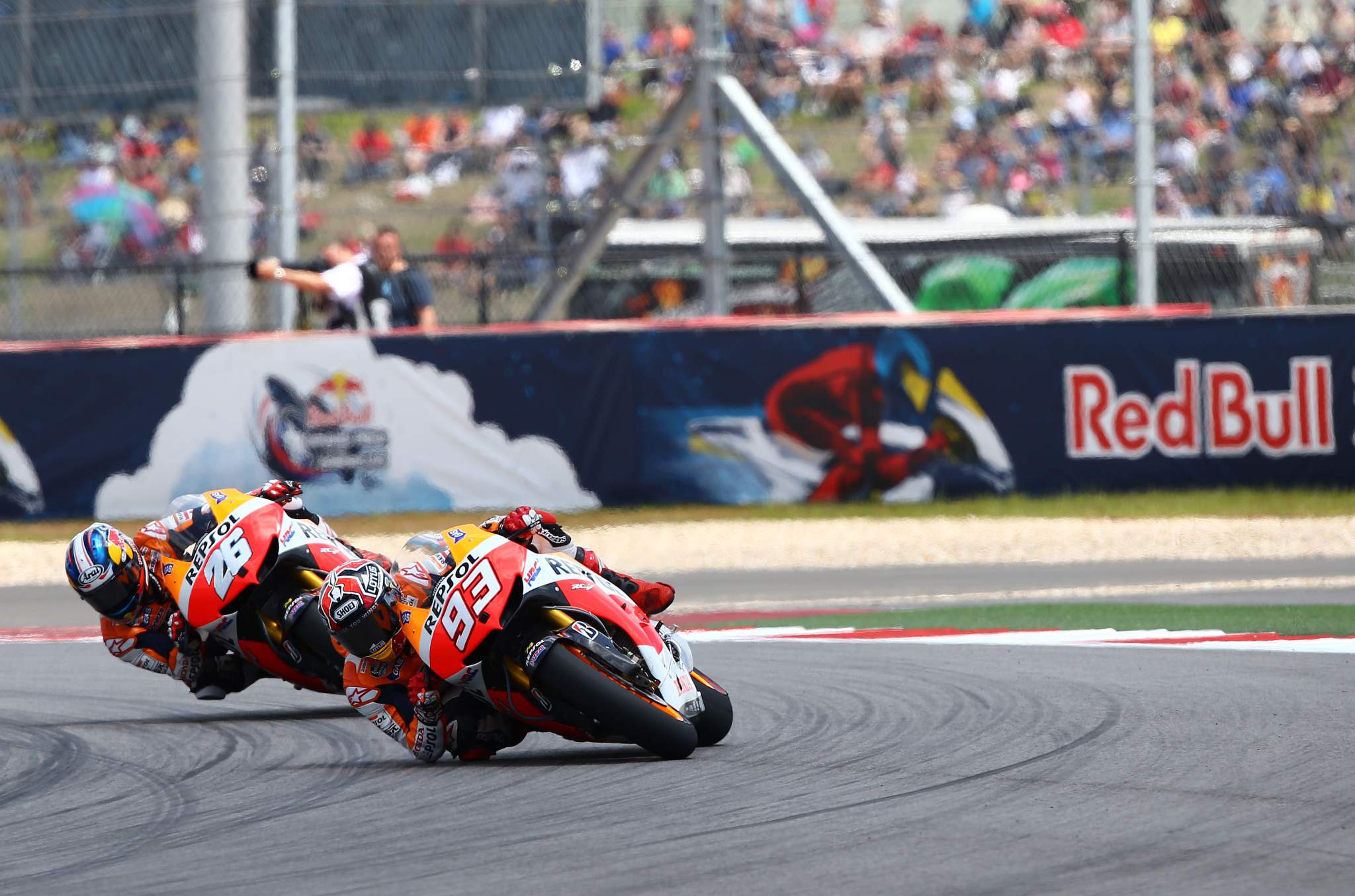
That win opened the floodgates. Marquez was only off the podium twice for the remainder of the year, once after a crash out of second place at Mugello and once when a miscommunication with his team led to him being disqualified at Phillip Island.
Most of the podium action was shared between him, Pedrosa and Lorenzo – and Pedrosa was actually the man who led for much of the mid-season until Marquez learned how to not just score well but to win consistently. Crashes and lingering injuries for both his rivals helped too.
Eventually the title went Marquez’s way by four points over Lorenzo in a gripping finale. Everyone in MotoGP knew Marquez was going to be good, but this immediate title was unthinkable. And it was just the start.






